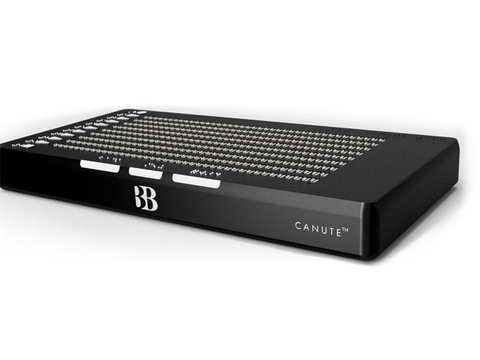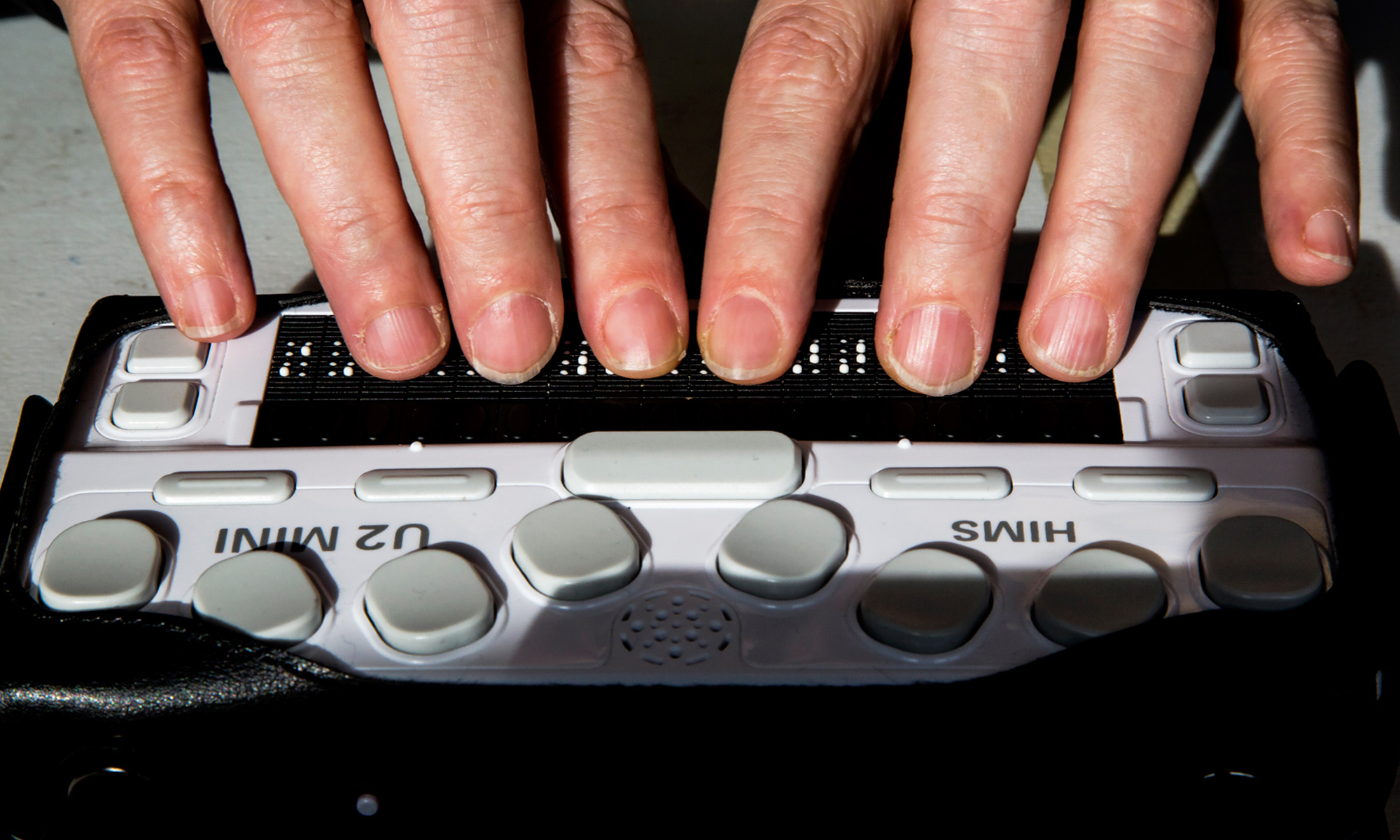Discover Cutting-edge Devices Created for the Visually Impaired
The development of innovative devices for the visually impaired stands for a substantial innovation in access and self-reliance. Technologies such as smart glasses with AI capacities and mobile applications created to give acoustic descriptions are improving everyday experiences for users. In addition, wearable gadgets that employ haptic responses improve environmental recognition, while modern Braille advancements provide brand-new methods to engage with message. As these tools remain to advance, their effect on the lives of those with aesthetic disabilities raises essential concerns about the future of inclusivity and freedom in various elements of life. What lies ahead in this technological landscape?
Smart Glasses for Navigating

Smart glasses made for navigating are revolutionizing the means visually damaged individuals connect with their atmosphere. These innovative devices use a mix of cam technology, expert system, and auditory feedback to supply real-time info regarding surroundings. By utilizing obstacle discovery systems, smart glasses can alert customers to prospective hazards, making it possible for safer flexibility in both unknown and acquainted settings.
The assimilation of GPS technology better improves navigating abilities, permitting users to get acoustic directions as they relocate. This hands-free method not just fosters self-reliance yet also empowers aesthetically damaged individuals to browse city landscapes with enhanced self-confidence. Furthermore, many smart glasses are furnished with attributes that identify sites and street indications, giving contextual information that improves the individual experience.
Moreover, the development of these devices is continually advancing, with business functioning to enhance the precision of object recognition and broaden the variety of navigational attributes. As clever glasses become a lot more accessible and inexpensive, they hold the possible to significantly transform day-to-day live for aesthetically damaged customers. Inevitably, these cutting-edge devices stand for a critical action towards inclusivity, offering enhanced wheelchair and a greater feeling of autonomy for individuals navigating the globe around them.

Mobile Application for Daily Living
How can mobile applications improve the day-to-day lives of visually damaged people? Mobile apps are transforming the way visually damaged customers navigate their environments, handle day-to-day tasks, and gain access to details. These applications provide vital assistance via various capabilities, promoting freedom and boosting lifestyle.
Numerous cutting-edge mobile applications are designed specifically for daily living. Applications like Be My Eyes link visually impaired individuals with sighted volunteers by means of video clip phone calls, enabling them to obtain real-time assistance with jobs such as checking out labels or navigating strange areas. Seeing AI, created by Microsoft, makes use of man-made intelligence to describe surroundings, read text, and determine things, effectively transforming a smart device into a powerful tool for daily help.
Furthermore, navigation applications customized for the visually damaged, such as Aira and BlindSquare, supply audio-based instructions and environmental info, making it possible for customers to traverse their surroundings securely and with confidence. Beyond navigating and instant help, mobile apps additionally support organization and task administration, with attributes that aid users establish pointers, create order of business, and track consultations. In recap, mobile applications act as vital resources, empowering aesthetically impaired individuals to lead more independent and satisfying lives.
Wearable Technologies for Support
Empowerment via innovation is significantly apparent in the realm of wearable gadgets made to assist visually damaged people. These innovative tools incorporate perfectly right into day-to-day live, improving navigation and supplying important comments to customers. Smart glasses furnished with cameras can identify faces and review text aloud, enabling customers to engage even more confidently in social and professional settings.
One more significant improvement is the use of haptic feedback systems in wearable devices. These systems utilize vibrations or other tactile signals to share details concerning the customer's environment, such as obstacles or changes in surface, improving movement and security. Wearable innovations likewise include wristbands that connect to smartphones, notifying customers to alerts via refined resonances, thus boosting connection without reliance on visual signs.
As these modern technologies proceed to evolve, they are not just enhancing freedom for visually damaged individuals however likewise promoting a better feeling of inclusion in society. By bridging the void in between difficulties faced in day-to-day living and the potential for freedom, wearable modern technologies function as pivotal tools in the quest for equal rights and empowerment for those with visual impairments.
Sound Description Tools
Audio summary devices play an essential function in improving accessibility for visually damaged people, offering them with the capacity to involve with aesthetic media. Smart glasses for the visually impaired. These devices use narrated descriptions of crucial aesthetic components in films, tv programs, and live efficiencies, making sure that customers can totally comprehend the context and emotions conveyed via visuals
Sound summary can be integrated right into different systems, consisting of streaming solutions, movie theater testings, and live theater. Several prominent streaming solutions currently include audio description as an availability attribute, enabling audiences to pick it conveniently. Along with mainstream media, specialized apps likewise exist, giving audio descriptions for art events, galleries, and other social occasions.
The performance of audio description rests on the ability of the storytellers, that should convey aesthetic details go to website succinctly without interfering with the original sound. Advancements in this field are also paving the means for even more tailored experiences, where users can change the level of information and pacing according to their preferences.
Braille Innovations and Devices
Braille developments and gadgets have actually considerably transformed the means aesthetically damaged people interact with text and information. Modern advancements have actually led to the development of flexible devices that improve proficiency and self-reliance among users.
Moreover, mobile Braille notetakers incorporate standard Braille input with modern functionalities, promoting note-taking, scheduling, and paper editing on the move. Smart glasses for the visually impaired. These small devices usually feature text-to-speech capabilities, linking the void between Braille and auditory details
Additionally, ingenious Braille printers have arised, enabling users to produce Braille labels, records, and academic materials effectively. This access fosters greater involvement in expert and academic atmospheres, ultimately advertising inclusivity.
Furthermore, study into clever Braille technologies remains to broaden. Devices that include expert system are being checked out to offer real-time navigating help and contextual info, boosting the user experience in diverse settings. Generally, these developments show a commitment to empowering visually damaged individuals through technology, ensuring they can conveniently gain access to and engage with the globe around them.

Conclusion
The innovation of cutting-edge devices for the visually impaired significantly boosts freedom and best eye care lifestyle. Smart glasses, mobile applications, wearable modern technologies, audio summary tools, and Braille innovations collectively equip individuals by providing necessary navigating support, environmental awareness, and boosted analysis experiences. These technologies not just foster higher incorporation yet also promote autonomy in everyday activities, ultimately contributing to an extra fair and accessible culture for aesthetically impaired individuals. Continued advancement in this field holds guarantee for additional improvements.
As smart glasses become extra affordable and easily accessible, they hold the possible to significantly change day-to-day life for aesthetically damaged users. Mobile apps are changing the way aesthetically damaged users navigate their settings, take care of daily tasks, and gain access to information. Apps like Be My Eyes connect visually impaired users with sighted volunteers via video clip calls, enabling them to receive real-time aid with jobs kids eye glasses such as reviewing tags or navigating unfamiliar rooms.In addition, navigation applications customized for the aesthetically impaired, such as Aira and BlindSquare, offer audio-based instructions and ecological information, making it possible for individuals to traverse their environments securely and with confidence.The improvement of ingenious devices for the visually impaired considerably improves independence and quality of life.